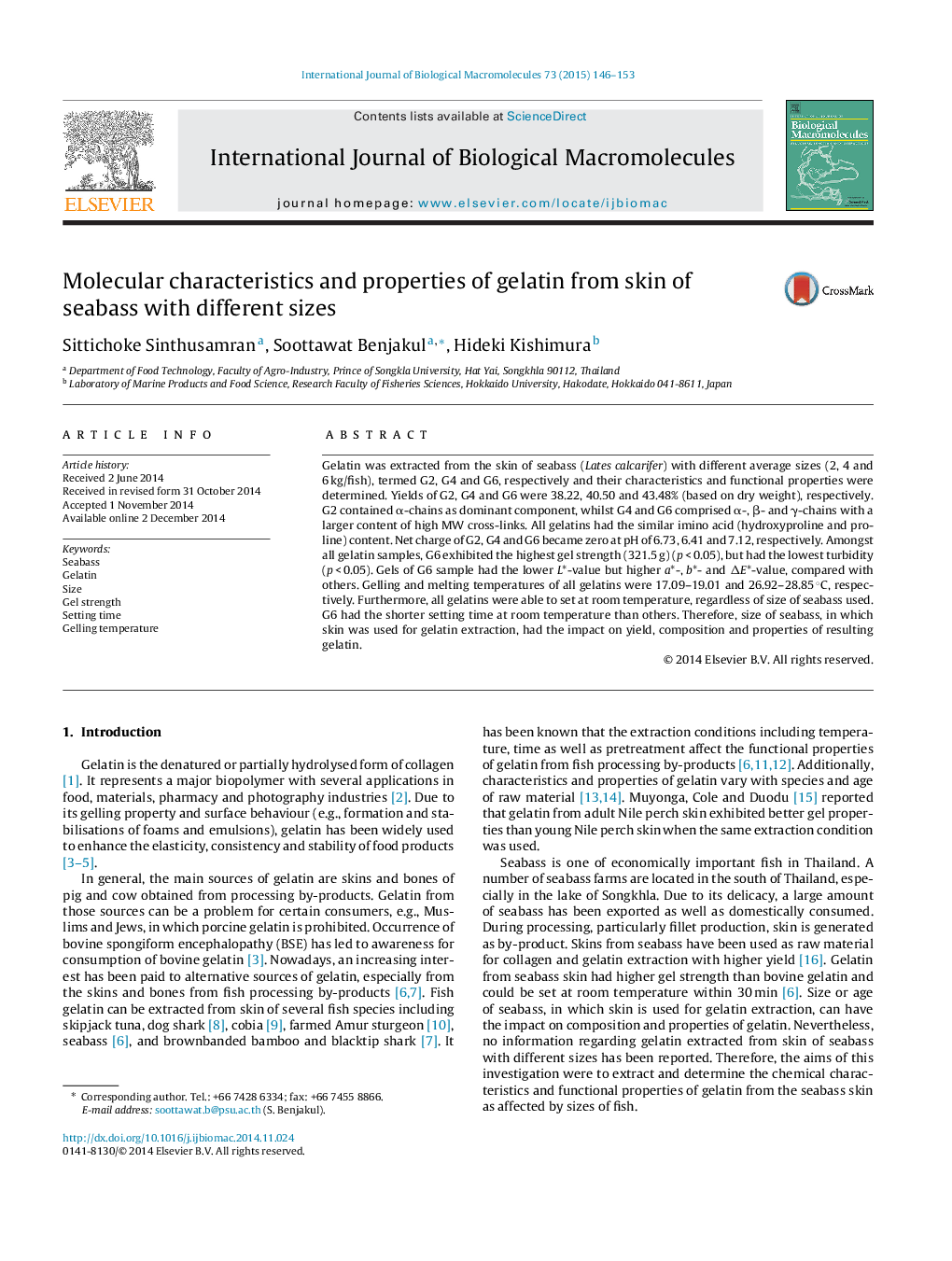| Article ID | Journal | Published Year | Pages | File Type |
|---|---|---|---|---|
| 8332095 | International Journal of Biological Macromolecules | 2015 | 8 Pages |
Abstract
Gelatin was extracted from the skin of seabass (Lates calcarifer) with different average sizes (2, 4 and 6 kg/fish), termed G2, G4 and G6, respectively and their characteristics and functional properties were determined. Yields of G2, G4 and G6 were 38.22, 40.50 and 43.48% (based on dry weight), respectively. G2 contained α-chains as dominant component, whilst G4 and G6 comprised α-, β- and γ-chains with a larger content of high MW cross-links. All gelatins had the similar imino acid (hydroxyproline and proline) content. Net charge of G2, G4 and G6 became zero at pH of 6.73, 6.41 and 7.12, respectively. Amongst all gelatin samples, G6 exhibited the highest gel strength (321.5 g) (p < 0.05), but had the lowest turbidity (p < 0.05). Gels of G6 sample had the lower L*-value but higher a*-, b*- and ÎE*-value, compared with others. Gelling and melting temperatures of all gelatins were 17.09-19.01 and 26.92-28.85 °C, respectively. Furthermore, all gelatins were able to set at room temperature, regardless of size of seabass used. G6 had the shorter setting time at room temperature than others. Therefore, size of seabass, in which skin was used for gelatin extraction, had the impact on yield, composition and properties of resulting gelatin.
Related Topics
Life Sciences
Biochemistry, Genetics and Molecular Biology
Biochemistry
Authors
Sittichoke Sinthusamran, Soottawat Benjakul, Hideki Kishimura,
